Pascal’s Law
Pascal’s Law: Overview
This topic covers concepts such as Pressure in Accelerating Fluids, Pressure Due to Fluid Container in Vertical Acceleration, Pressure Due to Fluid Container in Horizontal Acceleration, and Pressure Exerted Due to Rotating Fluid.
Important Questions on Pascal’s Law
An open cubical tank was initially fully filled with water. When the tank was accelerated on a horizontal plane along one of its side it was found that one third of volume of water spilled out. The acceleration was
The area of cross-section of the wider tube shown in figure is . If a mass of is placed on the massless piston, the difference in heights h in the level of water in the two tubes is
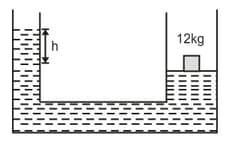
A bucket contains water filled upto a height= 15 cm. The bucket is tied to a rope which is passed over a frictionless light pulley and the other end of the rope is tied to a weight of mass which is half of that of the (bucket+water). The water pressure above the atmospheric pressure at the bottom is
An open cubical tank completely filled with water is kept on a horizontal surface. Its acceleration is then slowly increased to as shown in the figure. The side of the tank is . Find the mass of water that would spill out of the tank.
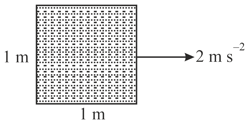
A spherical tank of 1.2 m radius is half filled with oil of relative density 0.8. If the tank is given a horizontal acceleration of 10 m/s2. Calculate the maximum pressure on the tank ?
For the system shown in the figure, the cylinder on the left athas a mass of and cross-sectional area of . The piston on the right, at , has cross-sectional area and negligible weight. If the apparatus is filled with oil. Find the force required to hold the system in equilibrium
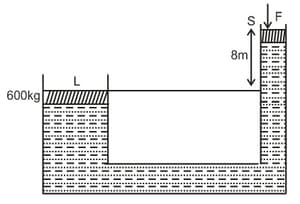
Find the mechanical advantage of the hydraulic lift.
Mechanical advantage of a hydraulic lift is directly proportional to the:
In a hydraulic lift, to increase the mechanical advantage:
Which of the following work on the Pascal's principle?
The mechanical advantage of a hydraulic lift is directly proportional to
The mechanical advantage of a hydraulic lift is directly proportional to
A hydraulic lift can lift a maximum load of . The area of cross section of the piston carrying the load is . The maximum pressure the smaller piston would have to bear is
A closed tank filled with water is mounted on a cart. The cart moves with an acceleration on a plane road. What is the difference in pressure of points and shown in figure?
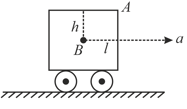
A hydraulic lift has a smaller piston with an area , and a larger piston with an area . The mechanical advantage of the hydraulic lift can be increased by:
Consider three vessels of same base area filled with a liquid to the same height as shown in the figure. Which of the following statement is not true?
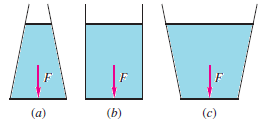
To what height should a cylindrical vessel be filled with a homogeneous to make the force with which the liquid pressure on the sides of the vessel equal to the force exerted by the liquid on the bottom of the vessel ?
Two syringes of different cross-section (without needle) filled with water are connected with a tightly fitted rubber tube filled with water. Diameters of the smaller piston and larger piston are and respectively. If a force of is applied to the smaller piston then the force exerted on the larger piston is
